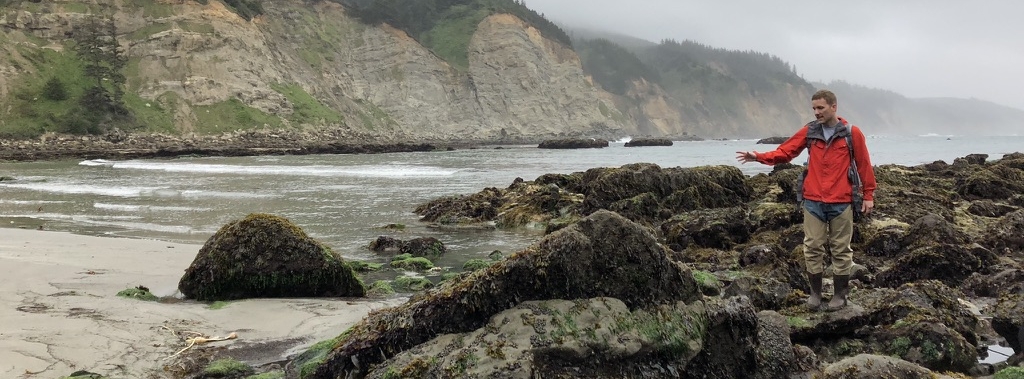Publications
- Rappaport SD, Lord JP (2021) Linear dominance hierarchies in female grass shrimp Palaemon pugio. The Biological Bulletin 241(1).
- Lord JP (2021) Using a game to teach invasive species spread and management. Journal of College Science Teaching. Accepted, in press.
- Lord JP (2021) Size affects intraspecific aggression and response to predation threat in juvenile lobsters. Marine Biology: 168:51.
- Lord JP, Moser RM, Buonocore EM, Sylvester EE, Morales MJ, Granitz AP, DiSipio Jr. A, Blakely E, O’Sullivan-Evangelista SL, Mateo TF, Chlebove GJ, Carey CM, Lucas O (2021) Dominance hierarchies in marine invertebrates. The Biological Bulletin 240(1).
- Lord JP, Rappaport SD (2021) Snail morphological and behavioral predator avoidance strategies vary by site. American Conchologist 49(2).
- Boch CA, DeVogelaere A, Burton E, King C, Lovera C, Buck K, Lord JP, Kuhnz L, Kaiser M, Reid-Rose C, Barry JP (2020) Guide to translocating coral fragments for deep-sea restoration. National Marine Sanctuaries Conservation Series ONMS-20-10. U.S. Department of Commerce, National Oceanic and Atmospheric Administration, Office of National Marine Sanctuaries. 25pp.
- Froehlich KR, Lord JP (2020) Can ocean acidification interfere with the ability of mud snails (Tritia obsoleta) to sense predators? Journal of Experimental Marine Biology and Ecology 526: 151355
- Lord JP, Harper EM, Barry JP (2019) Ocean acidification may alter predator-prey relationships and weaken nonlethal species interactions. Marine Ecology Progress Series 616: 83-94
- Boch CA, DeVogelaere A, Burton E, King C, Lord JP, Lovera C, Litvin S, Kuhnz L, Barry JP (2019) Coral translocation as a method to restore impacted deep-sea coral communities. Frontiers in Marine Science 6: 540
- Barry JP, Graves D, Kecy C, Lovera C, Boch CA, Lord JP (2018). Chasing the future: how will ocean changes affect marine life? Oceanography 30: 62-73
- Lord JP, Barry JP, Graves D (2017). Impact of climate change on direct and indirect species interactions. Marine Ecology Progress Series 571: 1-11 (Feature Article)
- Lord JP, Barry JP (2017) Juvenile mussel and abalone predation by the lined shore crab Pachygrapsus crassipes. Journal of Shellfish Research 36: 209-213
- Lord JP (2017) Potential impact of Asian shore crab Hemigrapsus sanguineus on native northeast Pacific crabs. Biological Invasions 19: 1879-1887
- Lord JP, Williams LR (2017) Increase in density of genetically diverse invasive Asian shore crab (Hemigrapsus sanguineus) populations in the Gulf of Maine. Biological Invasions 19: 1153–68
- Lord JP (2017) Impact of seawater temperature on growth and recruitment of invasive fouling species at the global scale. Marine Ecology 38: e12404. https://doi.org/10.1111/maec.12404
- Lord JP (2017) Temperature, space availability, and species assemblages impact competition in global fouling communities. Biological Invasions 19: 43-55
- Lord JP, Grant G, Palma D, Nigrete N, Dalvano B (2016) Global collaboration of students and teachers to monitor invasive species. Current: The Journal of Marine Education 30: 49-54
- Lord JP, Dalvano BE (2015) Differential response of the American lobster Homarus americanus to the invasive Asian shore crab Hemigrapsus sanguineus and green crab Carcinus maenas. Journal of Shellfish Research 34:1091-1096
- Lord JP, Calini JM, Whitlatch RB (2015) Influence of seawater temperature and shipping on the spread and establishment of invasive marine fouling species. Marine Biology 162:2481-2492
- Lord JP, Whitlatch RB (2015) Predicting competitive shifts and responses to climate change based on latitudinal distributions of species assemblages. Ecology 96:1264–1274
- Lord JP, Whitlatch RB (2014) Latitudinal patterns of shell thickness and metabolism in the eastern oyster Crassostrea virginica along the east coast of North America. Marine Biology 161:1487-1497
- Burris ZP, Lord JP, Young CM (2014) Effects of the oophagous bivalve Acesta oophaga on the morphology and fecundity of its deep-sea tubeworm host, Lamellibrachia luymesi. Marine Ecology 35:106-111
- Lord JP, Whitlatch RB (2013) Impact of temperature and prey shell thickness on feeding of the oyster drill Urosalpinx cinerea. Journal of Experimental Marine Biology & Ecology 407:234-240
- Lord JP, Whitlatch RB (2012) Inducible defenses in the eastern oyster Crassostrea virginica Gmelin in response to the presence of the predatory oyster drill Urosalpinx cinerea Say in Long Island Sound. Marine Biology 159:1177-1182
- Lord JP, Shanks AL (2012) Continuous growth facilitates feeding and reproduction: impact of size on energy allocation patterns for organisms with indeterminate growth. Marine Biology 159:1417-1428
- Lord JP (2012) Longevity and growth rates of the gumboot chiton Cryptochiton stelleri, and the black leather chiton Katharina tunicata. Malacologia 55:43-54
- Lord JP, Lyczkowski ER, Wilson WH (2011) Behavior and microhabitat selection of the tortoiseshell limpet Testudinalia testudinalis in the northwest Atlantic intertidal zone. Journal of Experimental Marine Biology & Ecology 407:234-240
- Lord JP (2011) Fine-scale intertidal distribution and recruitment patterns of the gumboot chiton Cryptochiton stelleri (Polyplacophora: Mopaliidae). Malacologia 54:147-157
-
Lord JP (2011) Larval development, metamorphosis and early growth of the gumboot chiton Cryptochiton stelleri (Middendorff, 1847) (Polyplacophora: Mopaliidae) on the Oregon coast. Journal of Molluscan Studies 77:182-188
-
Lord JP (2010) How symbiosis creates diversity. Science & Children 47:64-66


